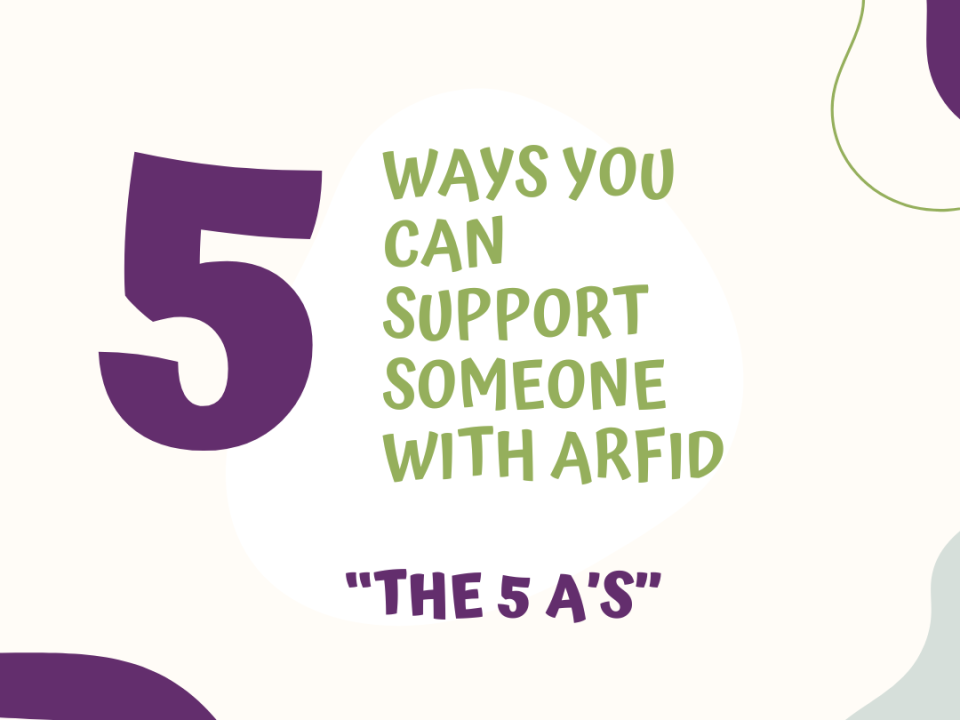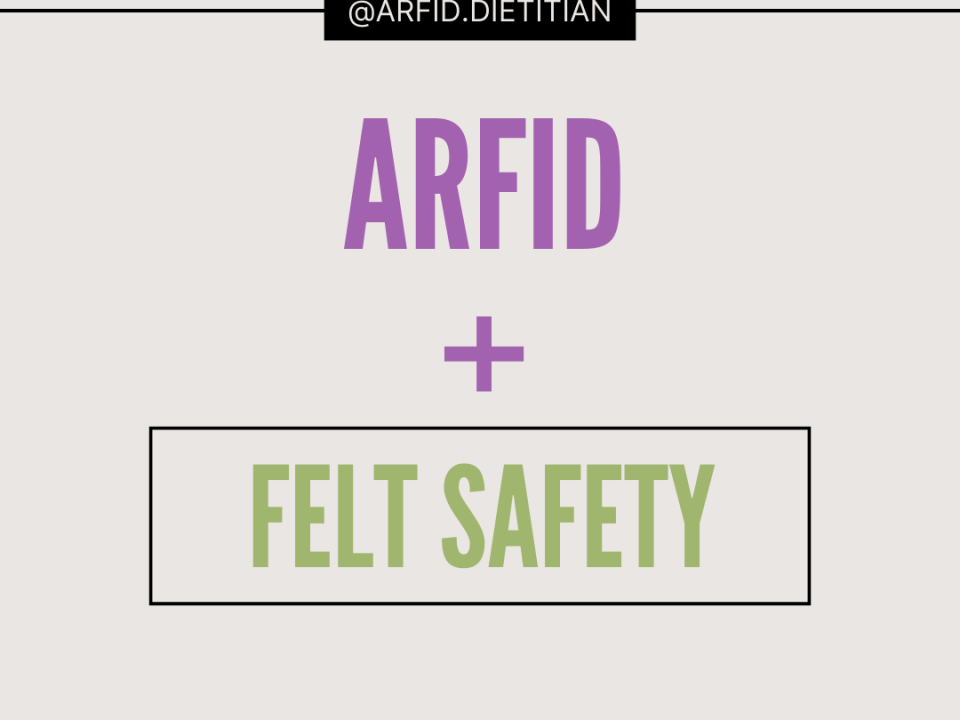The Intersection Between ARFID and Neurodiversity

Increasing Your Child’s Number of Preferred Foods
January 4, 2022
Food Exposure Therapy for ARFID and When is Appropriate?
October 11, 2022ARFID (Avoidance Restrictive Food Intake Disorder) co-occurs with many diagnoses that fall under the umbrella of neurodivergency. Neurodivergent is a term for individuals who’s brain diverges (i.e is different) from what is seen as typical or normal. It refers to many with mental illnesses and neurological conditions.

Co-Occuring Neurodivergent Diagnoses
Common co-occuring diagnoses of those with ARFID include Autism, ADHD, OCD, GAD (General Anxiety Disorder), , and sensory processing. (Note: this is not an exhaustive list)
Neurodivergence and Feeding and Eating
Neurodivergent individuals often report sensory sensitivity to certain foods and fear avoidance. Certain flavors, textures of foods and sounds and smells in their environment can cause sensory overwhelm and anxiety making eating more challenging. Some challenges reported include increased gag reflex, choking, nausea, or vomiting. Also avoidance of new foods related to of fear or perceived belief that the foods taste or texture will cause sensory anxiety or become disregulated. On top of the physical symptoms many experience social pressure and judgement around eating and food choices. This may include being labeled “picky eater”, pressure to eat “normally” or eat foods that they are sensitive to. Many also report internalized ableism or feeling inferior because they are unable to eat “normally”. Combined together these influences can negatively impact one’s ability to meet their nutrition needs for growth, development or weight maintenance.
When is it ARFID?
According to National Eating Disorder website , ” When the eating disturbance occurs in the context of another condition or disorder, the severity of the eating disturbance exceeds that routinely associated with the condition or disorder and warrants additional clinical attention.”
An eating disturbance for someone with ARFID may exhibit in one or more of these of three ways
- apparent lack of interest in eating or food
- avoidance based on the sensory characteristics of food
- concern about aversive consequences of eating
These eating disturbances lead to inadequate nutrition and energy intake and can be associated with one or more of the following.
- Significant weight loss (or failure to achieve expected weight gain or faltering growth in children)
- Significant nutritional deficiency
- Dependence on enteral feeding or oral nutritional supplements.
- Marked interference with psychosocial functioning.
It is typical for someone who is neurodivergent to have individual food preferences and sensory needs. What is not typical of someone who is neurodivergent is to have these preferences and needs impact their nutrition status. An ARFID diagnosis is appropriate if they are unable to meet nutrition needs for growth, weight, adequate nutrition status, or psychosocial function.
What to do if you or someone you know may have ARFID?
If you or someone you know may have ARFID seek help from a medical doctor or psychologist who can has experience working with those with ARFID. They are able to assess and diagnosis ARFID and provide appropriate treatment and referrals. A dietitian like myself is an essential part of the treatment team but is unable to diagnosis an individual with ARFID.
Treatment and Support for those who are Neurodivergent with ARFID
- Avoid judgement or comment. Get curious.
- Avoid trying to “fix” their eating challenges.
- Get to know their sensory preferences. (food and environment)
- Provide/recommend accommodations to make the eating environment feel safe and comfortable.
- Make safe and preferred foods easily accessible and available.
- Promote strategies for simplifying eating, meal planning and food preparation that work for the individual.
- Guide exposures based on sensory preferences.
- Include them in decisions around food exposures. What foods do they want to try? What is a safe environment for exposures?
For more information on ARFID and how a dietitian can help check out this post.
Please feel free to reach out if you have any questions on the topic!
I currently provide virtual 1-1 support to adolescents and adults with ARFID and suspected ARFID as well as offer support groups for Adults with ARFID.
If you have questions about my services please feel free to book a FREE 15-min discovery call.



